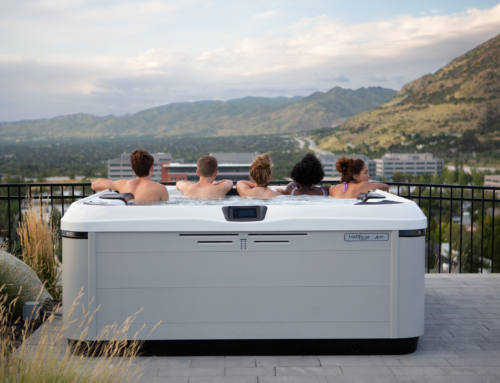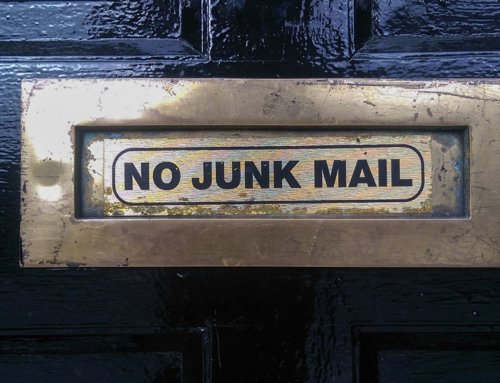What’s the one thing hot tub retailers must to have in order to be successful?
You guessed it: customers.
Stellar sales staff, a great business plan, the perfect location, none of these mean anything if you don’t drive in-store traffic effectively. Radio ads, store circulars, offsite events and giant sale banners have their place, but because spas and hot tubs are big ticket items, retailers of these products need to think outside the box.
Put a New Spin on Cross Marketing
Why do people buy hot tubs? What other products or services do these same people use? Think about how you can use this information to increase store traffic. One way is by cross marketing. Cross marketing is when you join forces with other businesses and service providers for a mutual advantage.
Cross marketing is when you join forces with other businesses and service providers for a mutual advantage.
Let’s say Shemar Shopper has an old basketball knee injury that acts up when the weather changes. He gets occasional treatment for this injury at the local sports medicine clinic and also sees a physical therapist regularly. Across town, Betty Buyer is seeking relief for her arthritis pain from a local rheumatologist, and just down the street Christopher Client is at the chiropractor…again. What does this have to do with cross marketing?
Consumer Affairs lists therapy as one of the top reasons people purchase spas. A great way to reach customers in need of therapeutic solutions is to cultivate relationships with healthcare providers in the area and suggest ways you can help one another. For example:
- Offer a discount on a hot tub to place in physical therapy and chiropractic offices in exchange for business referrals. Their clients experience the therapeutic benefits of your product, driving them to your store for more information and a potential purchase for personal use.
- Let doctors who specialize in sports medicine use your store for informational clinics. They can promote it to their current patients, you can promote it to current and past customers, and both businesses have the opportunity to reach new clientele.
Working with local chapters of organizations devoted to pain management research is another way to benefit your business while also helping another group succeed in reaching its goals.
- Arthritis National Research Foundation: Sponsor a marathon or a community fun run with funds going to their Racing for a Cure initiative. Highlight the fact that another group, the Arthritis foundation, promotes soaking in 92-100 degree whirlpools as one pain management technique. Consider making a test spa available to participants as well.
- American Chronic Pain Association: Organize a sales event in conjunction with their Pain Awareness Month in September. Offer information on nearby resources and make information from their website available to customers. Again, focus on how hot tubs can be an essential tool for pain management.
- National Fibromyalgia and Chronic Pain Association: Sponsor a Walk to Cure FM to increase awareness of and raise funds for research. Make your business the starting point, the ending point, or both of the walk and encourage participants to come inside for more information on the disease. Test spa availability is a plus.
Genco Pools & Spas’ director of business development, Lauren Ball Khelif, says this about participating in charity events:
“…I actually think it helps us in business because when a customer comes into the store looking for something, they’re looking for a reason to buy here versus somewhere else (there are always other places to buy things). And when I talk to a new customer I always tell them a little bit about the company. I always tell them who we are, and I always say, ‘Were you at this or that event? You might have seen us there.’”
Also, don’t forget to mention that some insurance plans will cover hot tub purchases (in varying amounts) for medical uses when prescribed by a physician.
...close to 80% are more likely to purchase from a company that shows how it makes a difference in people's lives beyond profiting the business.
Every single one of these options bring people into contact with your products or directly to your store location. Community involvement is one of the top ways to effectively market your business while building relationships with potential customers. Not to mention that today’s consumers are more likely to trust a brand that actively impacts society for the better. Research by Cone Communications and Edelman reports that close to 80% are more likely to purchase from a company that shows how it makes a difference in people’s lives beyond profiting the business.
Make the Internet Work for You
Take advantage of the mobile craze with location-based marketing. Location-based marketing is when you use tools like Google My Business, Facebook’s Local Awareness Ads, and mobile apps such as RetailMeNot or Pushlocal that target people within a certain distance from your geographic location. Many of these options are very low-cost and in some cases, like Google My Business, cost nothing at all.
When Cathy Consumer is interested in buying a hot tub, the first thing she’s likely to do is a Google search for “hot tub stores near me.” According to Google, “near me” searches have grown at a rate of 2.4 times annually over the past few years. You need to make sure that your store pops up near the top of those search results. Here’s how:
- Websites: Develop a professional, well-designed website with your business name, location, address and phone number prominently displayed. Provide professional photos and detailed descriptions of the products and brands carried in your store. Again, emphasize all of your contact information and be available to answer questions promptly.
- Facebook: Create a Facebook page for your business that includes customer testimonials, quality in-store experiences, promotions, special events, sales and community involvement. Aqua Magazine suggests using “Facebook’s Store Visits metric [which] compares a customer’s cell phone location to your store’s location. If they match, the social network knows that the customer who saw the ad stopped by your store.”
- Online Business Directories: List your business on sites like Houzz, Yelp, Foursquare and Angie’s List then encourage customers to leave comments and ratings.
Keep in mind that Cathy Consumer will likely conduct her search on her smartphone, which is great because another Aqua Magazine article reports that, in 80% of the local searches using mobile devices, 75% of those searchers made same-day purchases and 63% made purchases in the same hour as their search. Whatever device is used to locate your store, it definitely pays to have a strong online presence.
Doric Marketing Chief, Dorian Davies points out that, “Many dealers have invested very heavily in new websites that are compatible with mobile devices and are quite rightly reaping the rewards of bumper sales thanks to increased footfall in showrooms.” The point is to do everything in your power to make Cathy Consumer’s search lead to your store.
What You Probably Didn’t Know
On a final note, you should be aware of two customer practices: Showrooming and Webrooming. Whereas “showrooming” is when people visit the store then go home and buy online, “Webrooming” is when they shop online then go buy from the showroom. In the past, showrooming has been a thorn in retailer’s sides, but that is changing with a recent upsurge in webrooming. One article reports that, “while 73% of shoppers have showroomed in the past six months, 88% have been webrooming.”
Your job is to get those webroomers off the internet and into your store. Start thinking outside the box to increase foot traffic in your hot tub retail store!









Leave A Comment